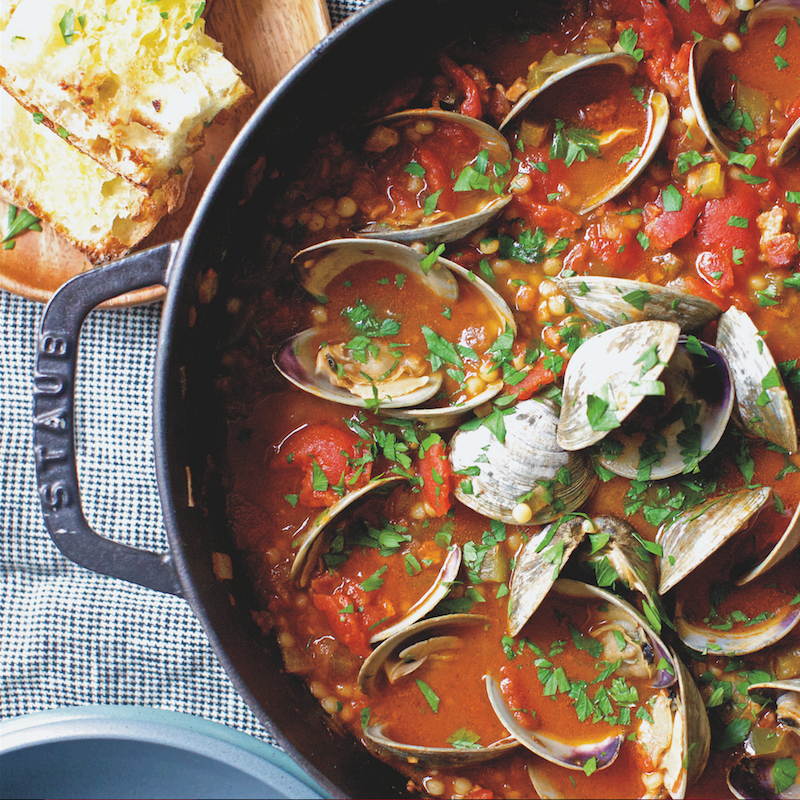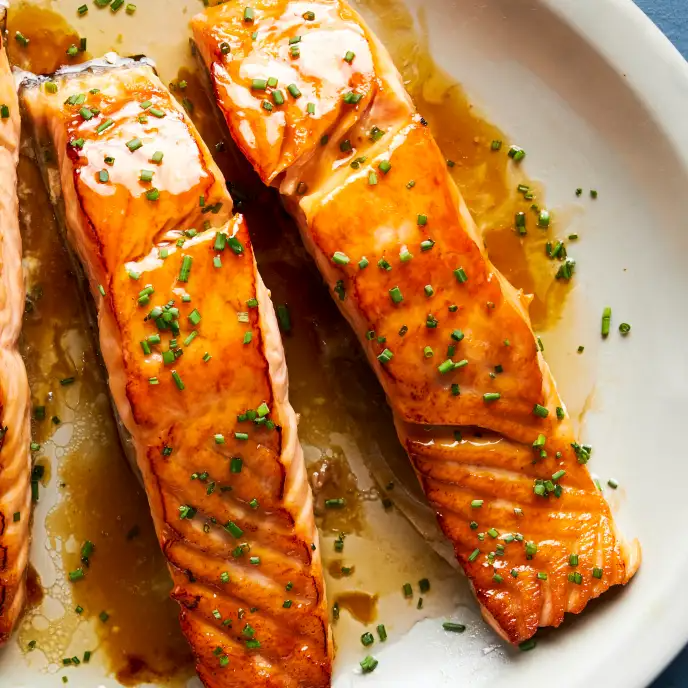 Double-Glazed Salmon with Ginger and Apple Cider for Two
Double-Glazed Salmon with Ginger and Apple Cider for Two
For a quick, high-impact salmon entrée, we started by brining center-cut fillets in a salt and sugar solution and making full-flavored, glossy glaze. We built that glaze on apple cider, sharpening its flavor with tangy cider vinegar and spicy ginger and seasoning it with soy sauce. Rather than relying on lots of sugar to thicken the glaze, we stirred in a little cornstarch. We applied the glaze to fillets that we had seared on the stovetop until they were well browned and then let the fish finish cooking gently in the oven. We finished our fillets by painting on another coating of the clingy, gingery glaze just before serving
2 T. table salt for brining
2 T. sugar for brining
2 (6- to 8-ounce) skin-on salmon fillets
2 T. plus 1 tsp. apple cider
1½ T. cider vinegar
1 T. sugar
2 tsp. soy sauce
¾ tsp. cornstarch
1 (½-inch) piece ginger, peeled and lightly smashed
½ tsp. vegetable oil
1½ tsp. minced fresh parsley or chives
If apple cider is unavailable, substitute apple juice. Use the bottom of a small saucepan or skillet to smash the ginger. To ensure uniform cooking, buy a 12- to 16-ounce center-cut salmon fillet and cut it into two pieces. If your salmon is less than 1 inch thick at its thickest point, check for doneness after 10 minutes of roasting in step 3. 1 Adjust oven rack to middle position and heat oven to 300 degrees. Dissolve salt and 2 T. sugar in 1 quart cold water in large container. Submerge salmon fillets in brine and let stand at room temperature for 15 minutes. Remove fillets from brine and pat dry with paper towels. 2 Meanwhile, combine cider, vinegar, sugar, soy sauce, and cornstarch in small saucepan and stir until no lumps remain. Add ginger and bring to simmer over medium-high heat, stirring frequently. Continue to cook, stirring frequently, until thickened, about 30 seconds longer. Remove from heat and let ginger steep for at least 5 minutes. Discard ginger and transfer 1 T. glaze to small bowl. Heat oil in 10-inch ovensafe nonstick skillet over medium-high heat until just smoking. Place fillets, flesh side down, in skillet and cook until flesh side is well browned, 2 to 3 minutes. Flip fillets and reduce heat to low. Brush tops of fillets with reserved 1 T. glaze. Transfer skillet to oven and cook until centers are still translucent when checked with tip of paring knife and register 125 degrees (for medium-rare), 10 to 15 minutes. Wash and dry brush. 4 Brush remaining glaze on top and sides of each fillet and sprinkle with parsley. Transfer to platter or individual plates and serve.
Variations:
LEMONY THYME GLAZE
¼ cup lemon juice (2 lemons)
3 T. water
2 T. sugar
4 tsp. soy sauce
1 1/2 tsp. cornstarch
6 sprigs fresh thyme
Combine lemon juice, water, sugar, soy sauce, and cornstarch in small saucepan and stir until no lumps remain. Add thyme sprigs and bring to simmer over medium-high heat, stirring frequently. Continue to cook, stirring frequently, until thickened, about 1 minute longer. Remove from heat. Discard thyme sprigs just before using.
SMOKY MAPLE GLAZE
White wine or champagne vinegar can be substituted for the red wine vinegar, if desired.
1/3 cup red wine vinegar
3 T. maple syrup
4 tsp. soy sauce
1 1/2 tsp. cornstarch
1/8 tsp. liquid smoke
Combine all ingredients in small saucepan and stir until no lumps remain. Bring to simmer over medium-high heat, stirring frequently. Continue to cook, stirring frequently, until thickened, about 1 minute longer. Remove from heat.
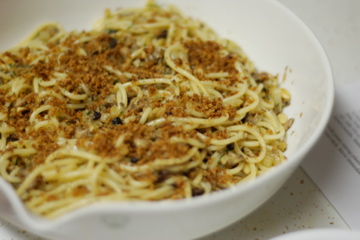 Pasta con le Sarde
Pasta con le Sarde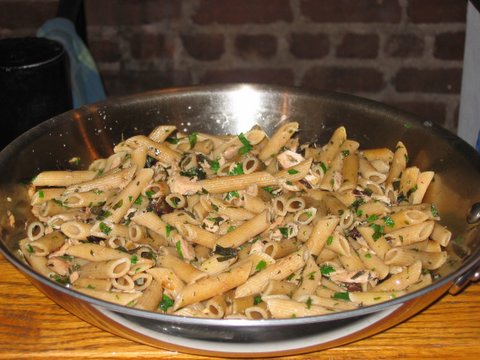 Bucatini With Tuna
Bucatini With Tuna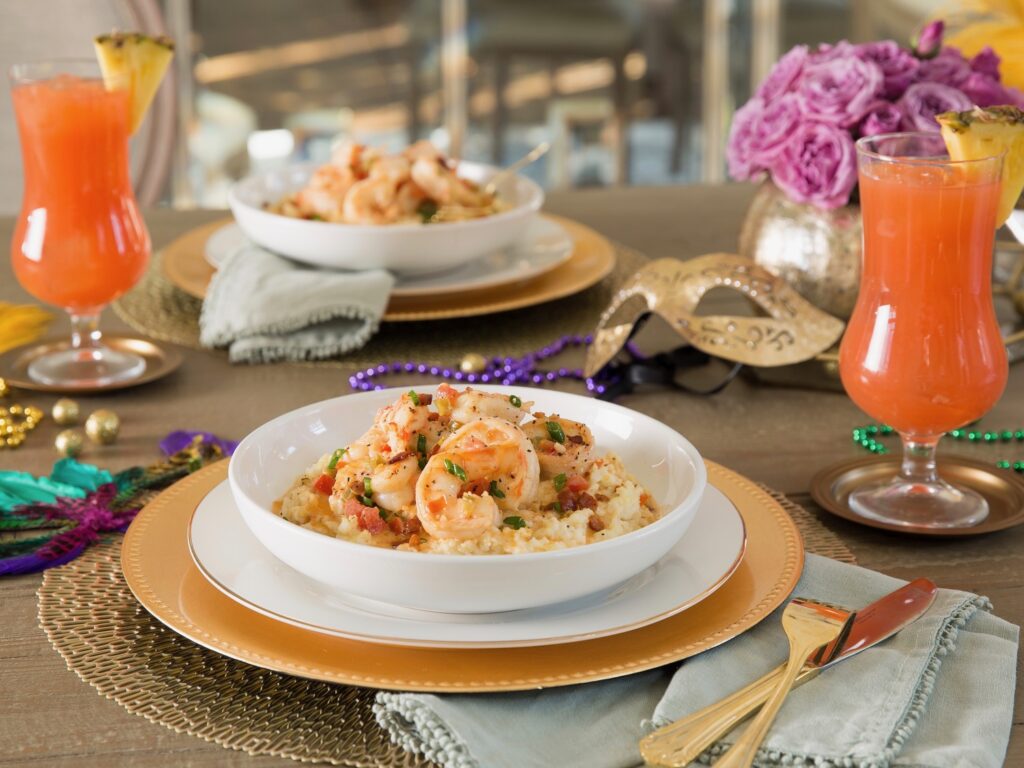
 Grilled Lime Salmon with Avocado-Mango Salsa and Coconut Rice
Grilled Lime Salmon with Avocado-Mango Salsa and Coconut Rice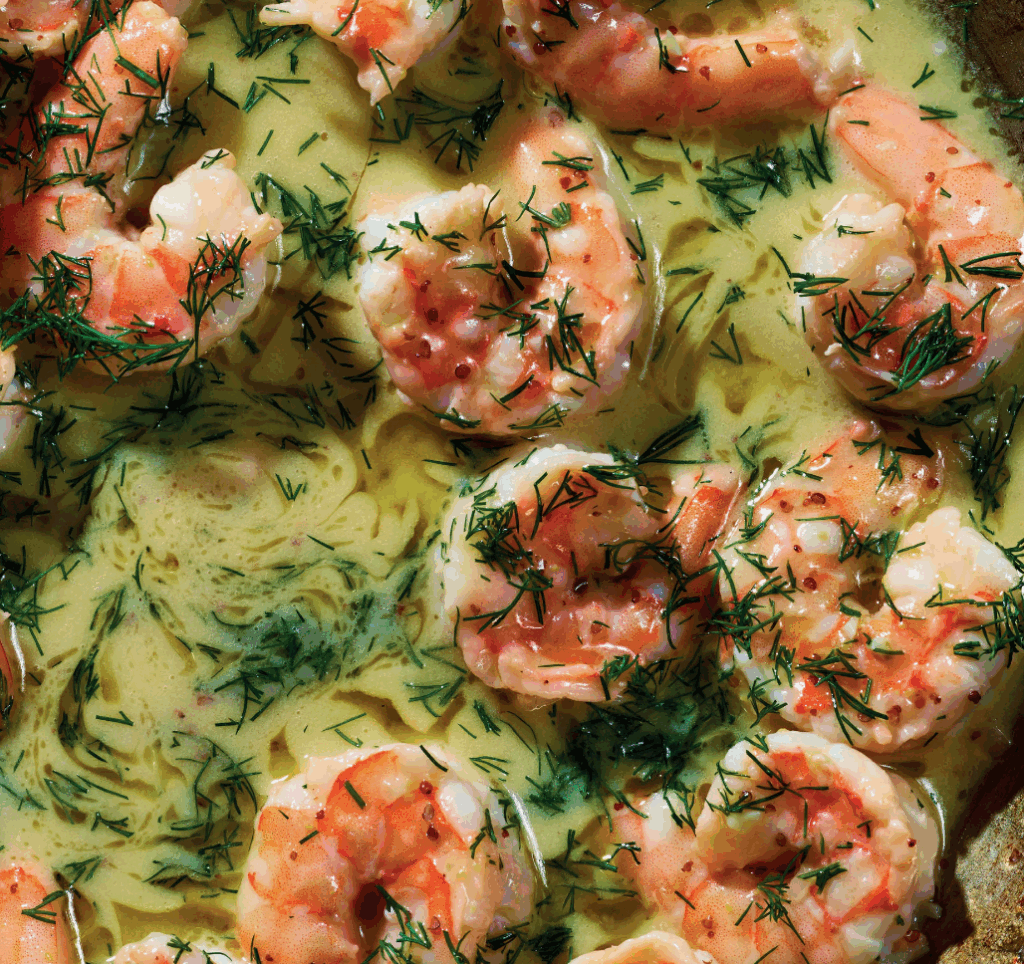 Buttery Shrimp With Dill (Garides Me Ánitho)
Buttery Shrimp With Dill (Garides Me Ánitho)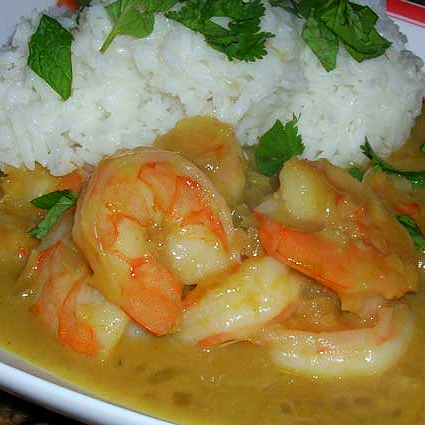 Green Curry Shrimp
Green Curry Shrimp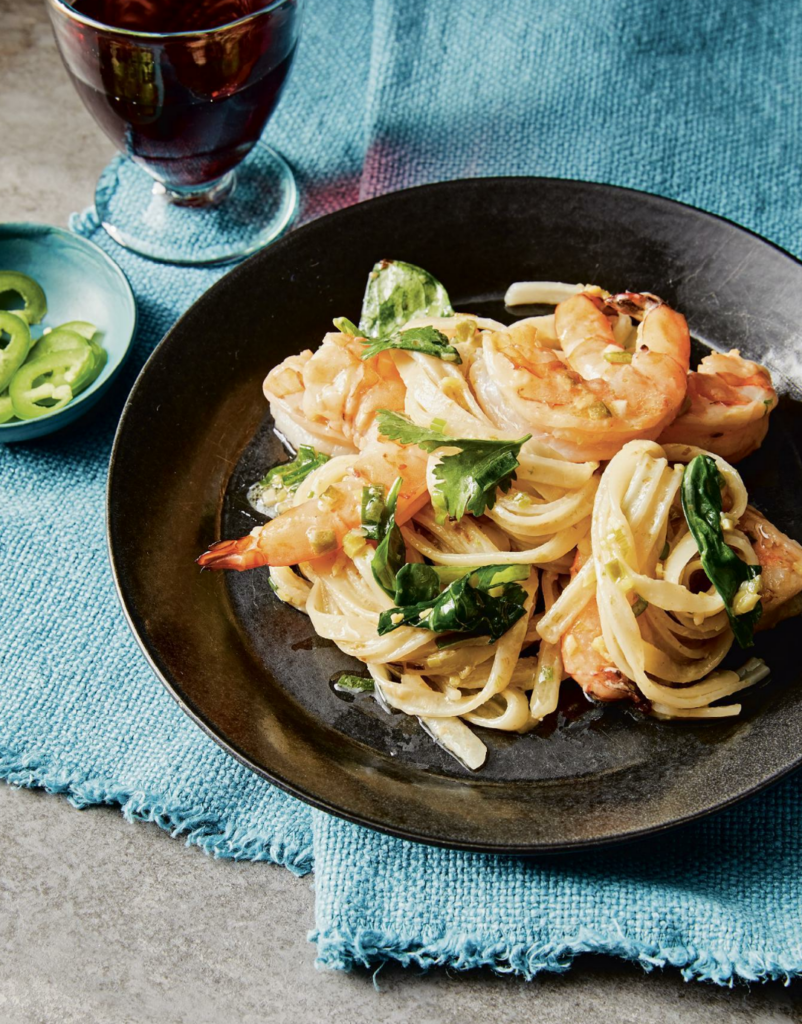 One Pan Gingery Coconut Noodles with Shrimp and Greens
One Pan Gingery Coconut Noodles with Shrimp and Greens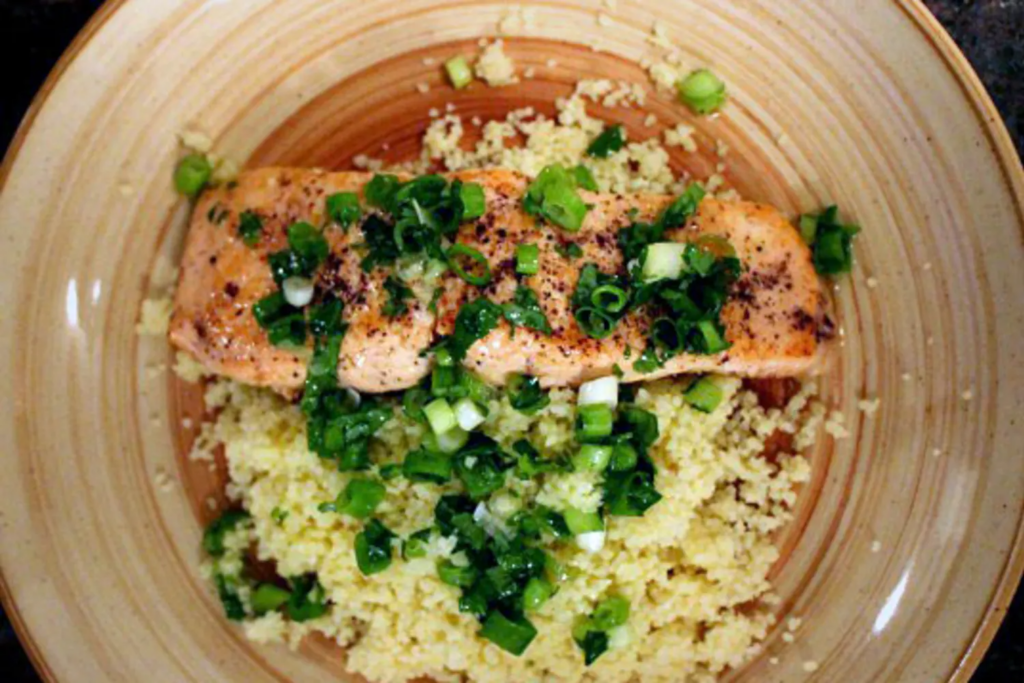 Quick Salmon & Couscous with Cilantro Vinaigrette
Quick Salmon & Couscous with Cilantro Vinaigrette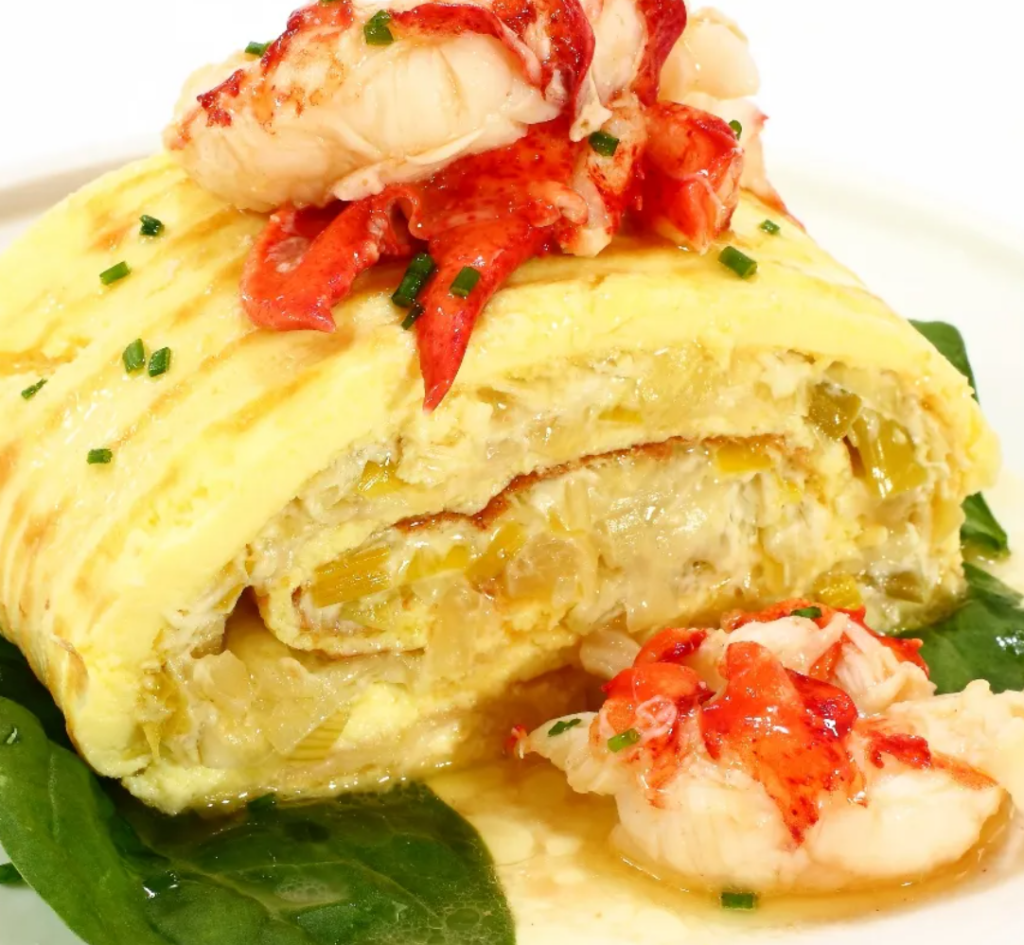 Egg Roulade with Leeks, Parmesan, Lobster, and Sherry Butter
Egg Roulade with Leeks, Parmesan, Lobster, and Sherry Butter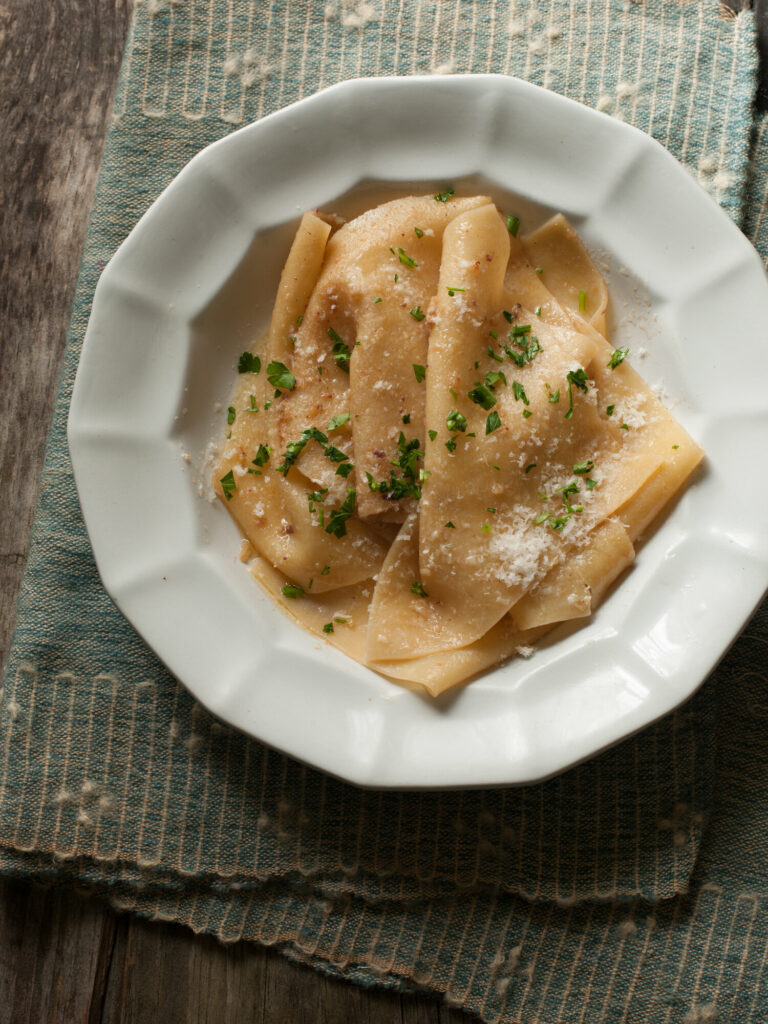 Lasagna della Vigilia
Lasagna della Vigilia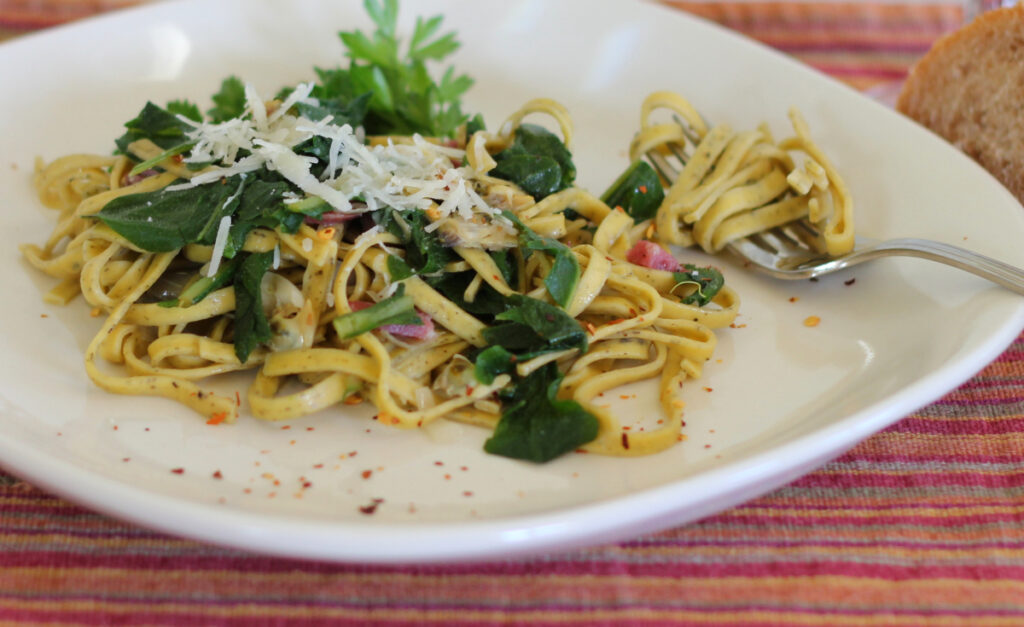 Cat’s Ear and Clam Linguine
Cat’s Ear and Clam Linguine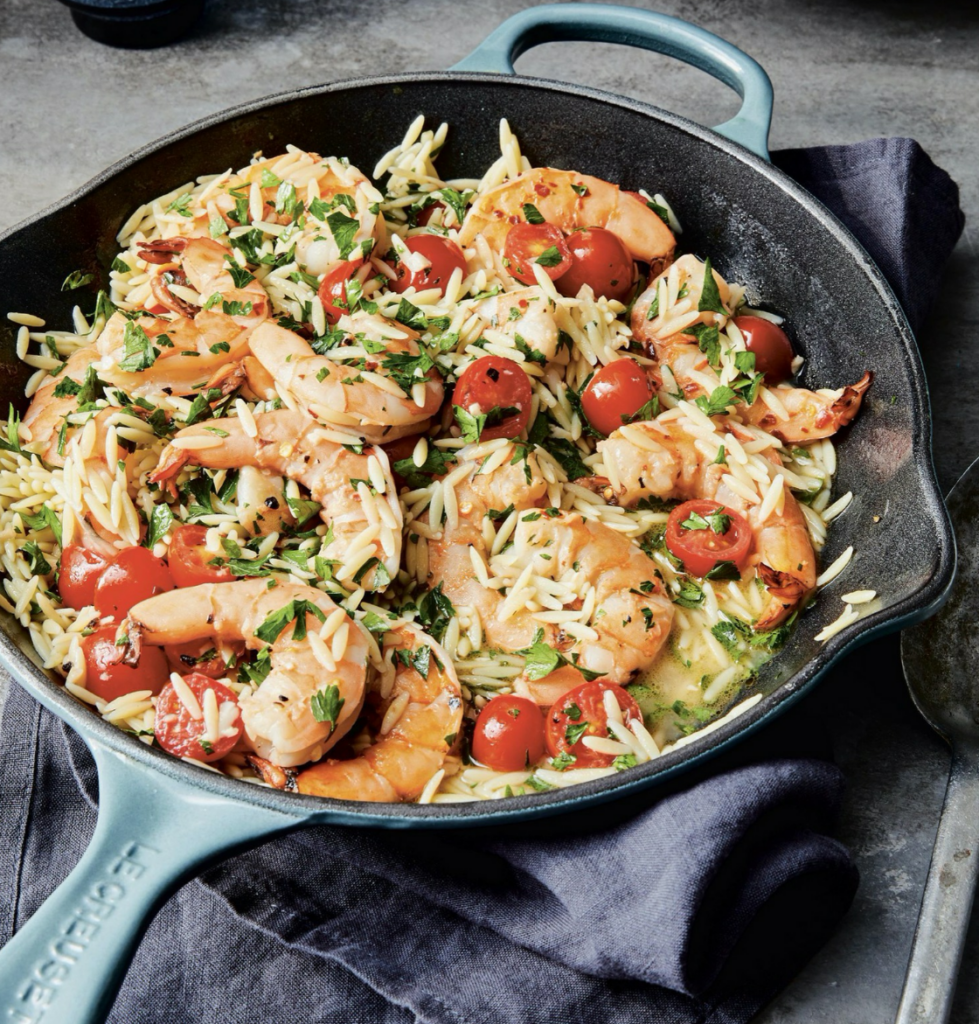 Skillet Shrimp Scampi with Orzo and Tomatoes
Skillet Shrimp Scampi with Orzo and Tomatoes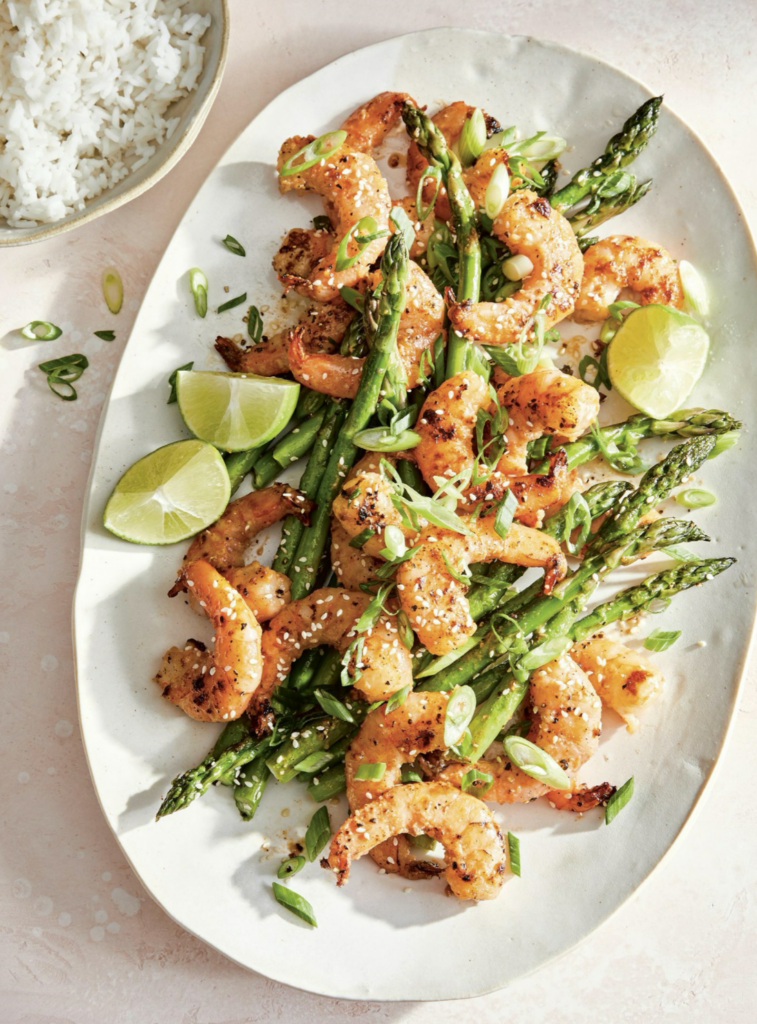 Seared Miso-Sesame Shrimp and Asparagus
Seared Miso-Sesame Shrimp and Asparagus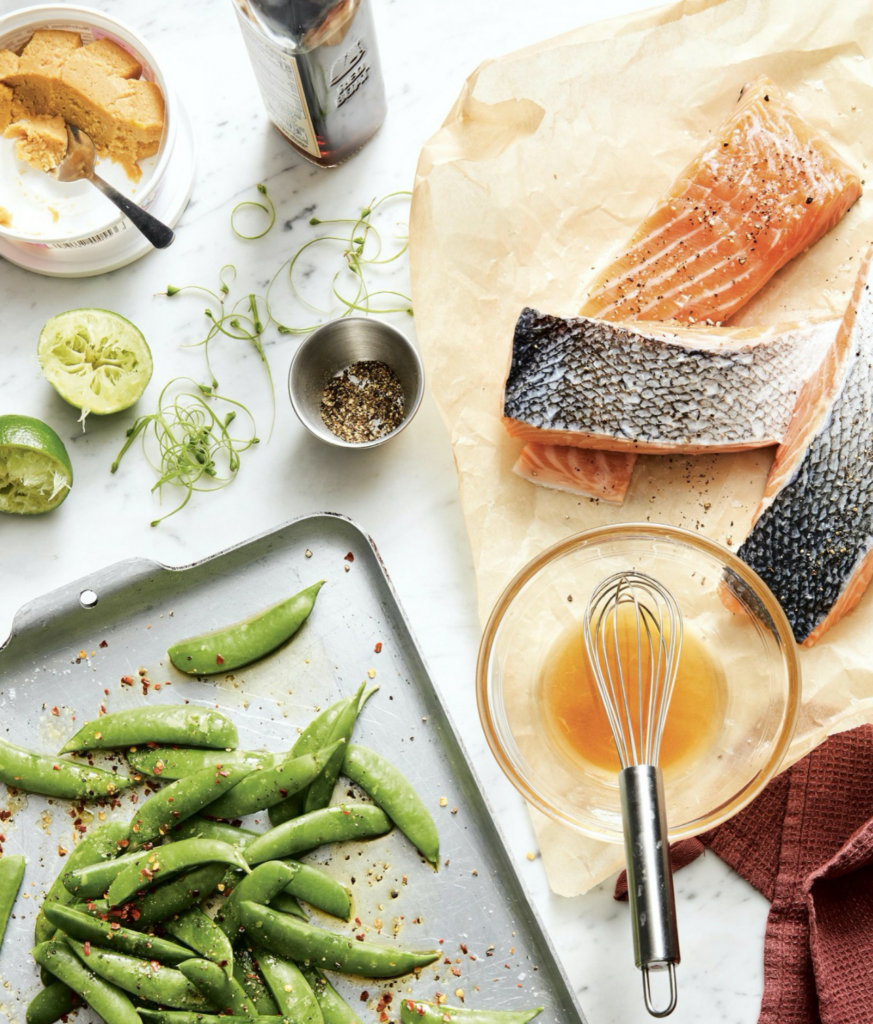 Miso-Glazed Salmon with Roasted Sugar Snap Peas
Miso-Glazed Salmon with Roasted Sugar Snap Peas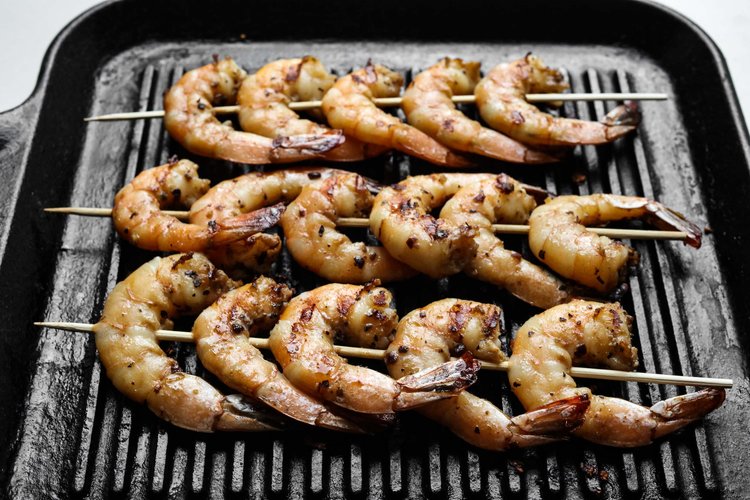 Spicebush-Marinated Shrimp Skewers
Spicebush-Marinated Shrimp Skewers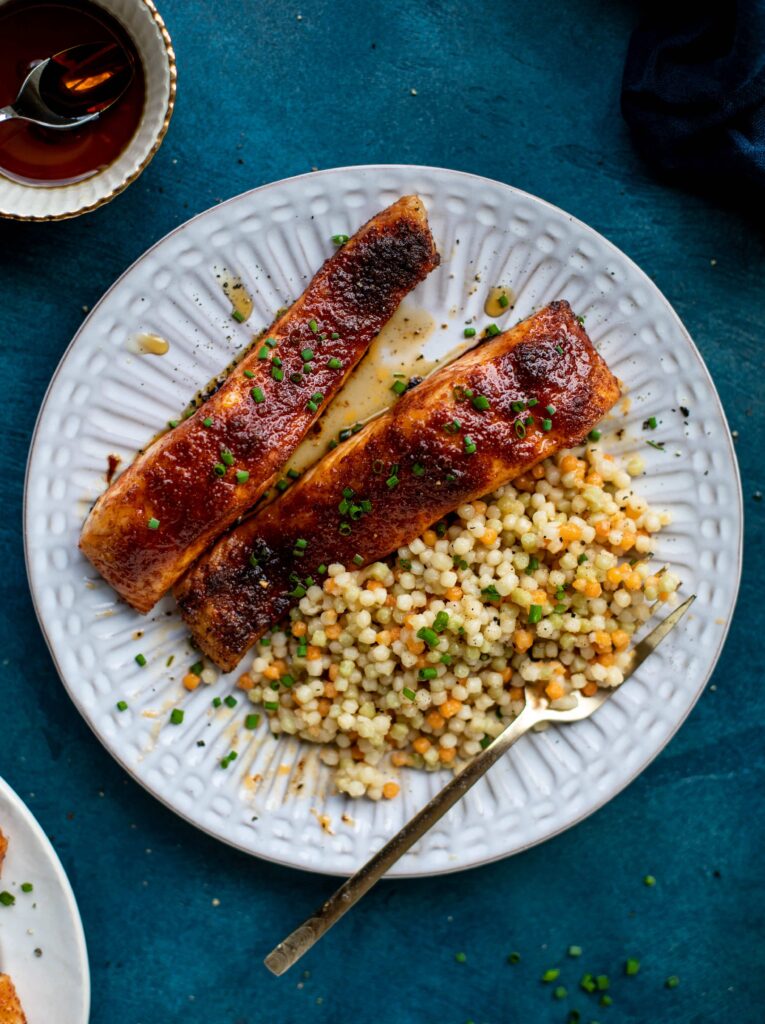 Maple BBQ Salmon with Brown Butter Couscous
Maple BBQ Salmon with Brown Butter Couscous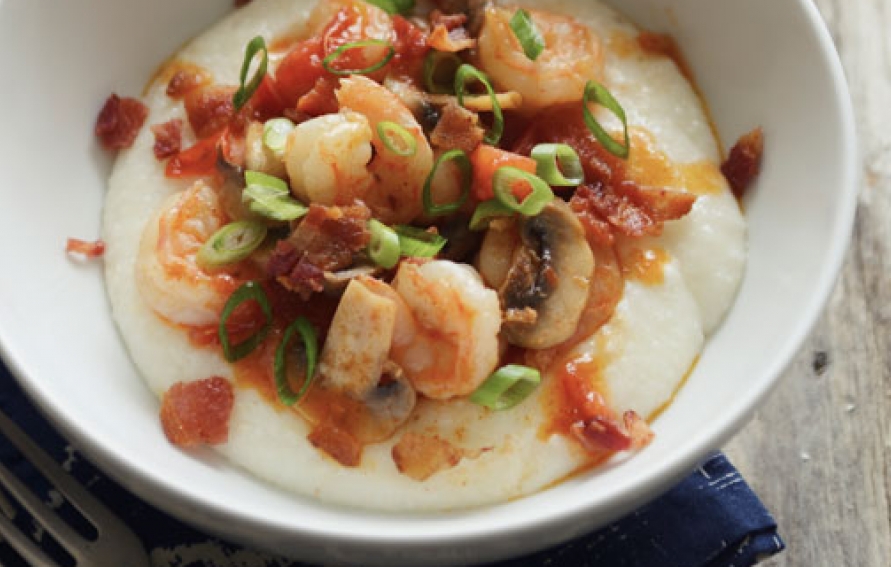 Shrimp and Creamy Goat Cheese Grits
Shrimp and Creamy Goat Cheese Grits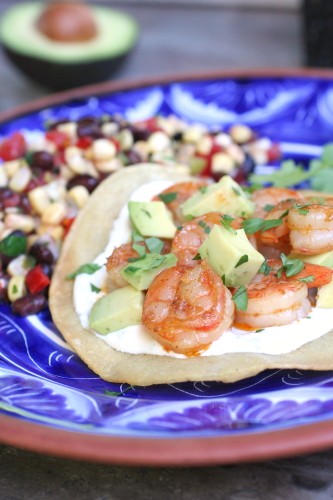 Shrimp Tostadas with Lime Crema
Shrimp Tostadas with Lime Crema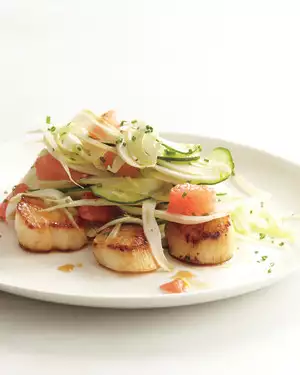 Seared Scallops with Shaved Fennel Cucumber and Grapefruit
Seared Scallops with Shaved Fennel Cucumber and Grapefruit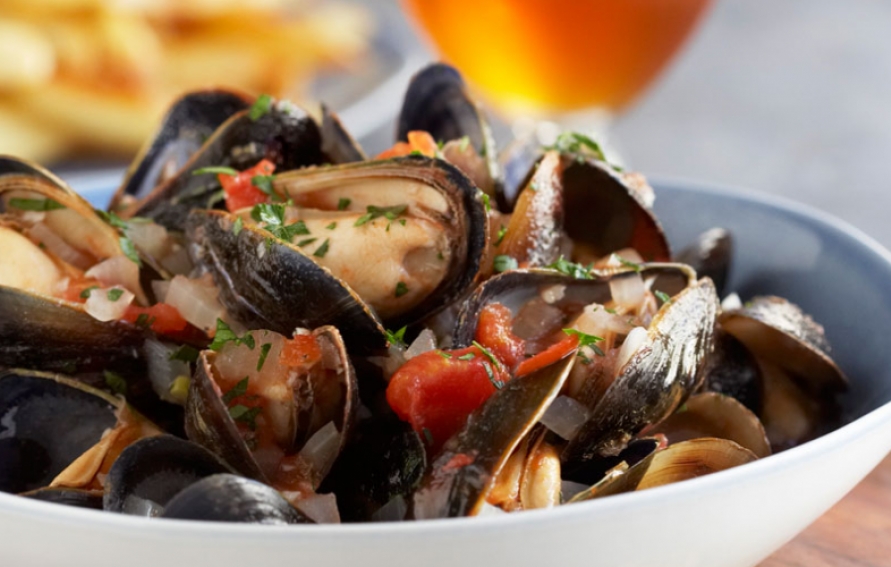 Moules Marinieres (Sailor-Style Mussels)
Moules Marinieres (Sailor-Style Mussels)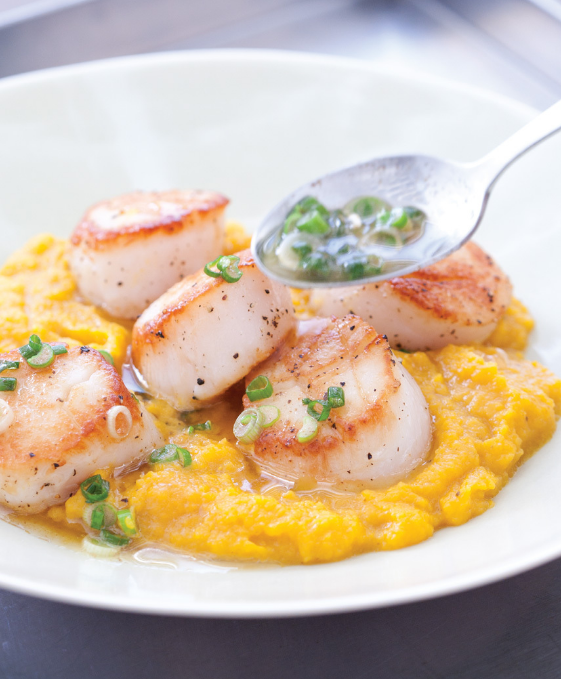 Pan-Seared Scallops with Butternut Squash Puree
Pan-Seared Scallops with Butternut Squash Puree Pasta with Anchovies and Tomato
Pasta with Anchovies and Tomato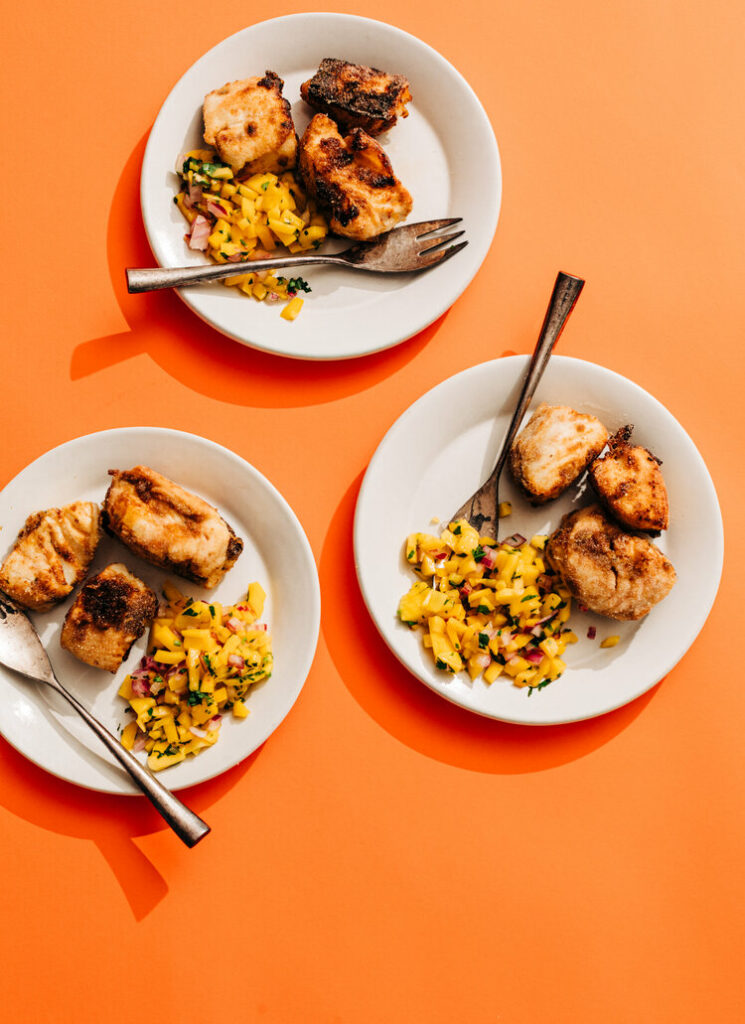 Crispy Marinated Pan-Fried Fish and Mango Slaw
Crispy Marinated Pan-Fried Fish and Mango Slaw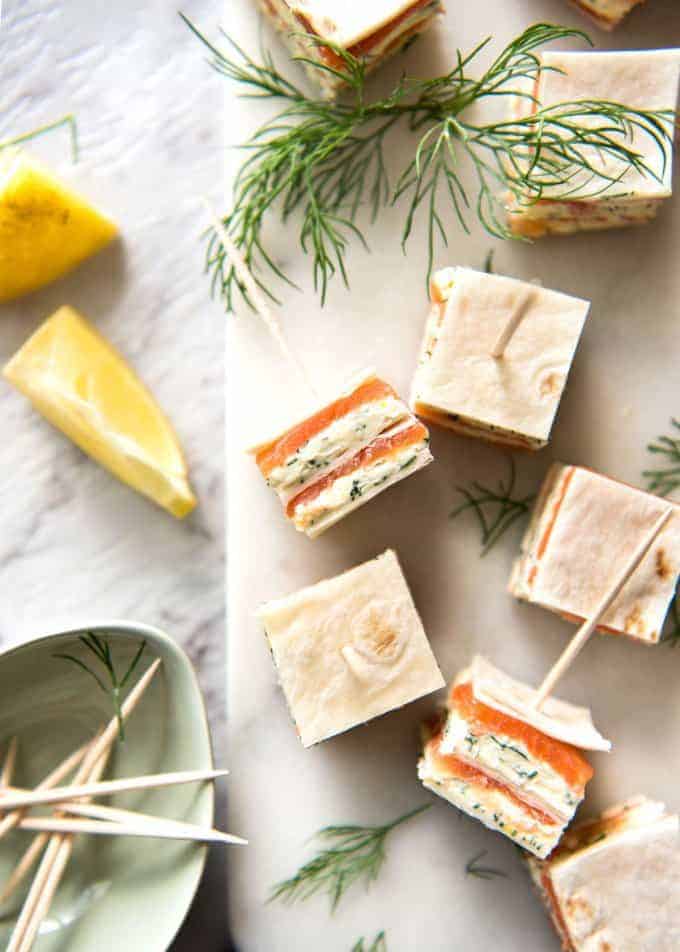
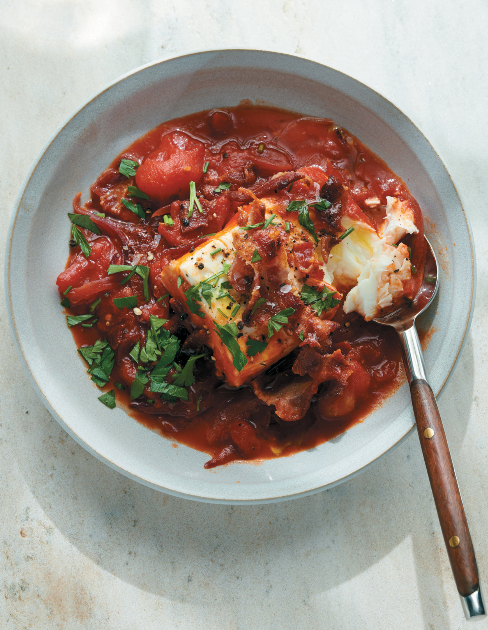 Simmered Fish with Tomatoes & Bacon
Simmered Fish with Tomatoes & Bacon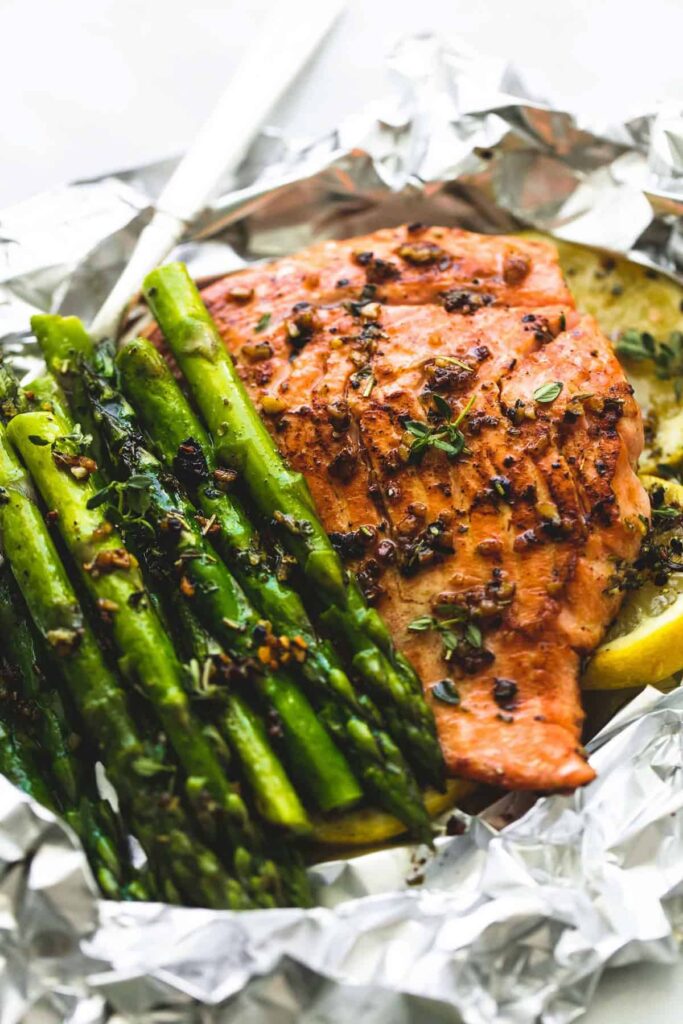 Herb Butter Salmon and Asparagus Foil Packs
Herb Butter Salmon and Asparagus Foil Packs Roasted Salmon with Tangerine Relish
Roasted Salmon with Tangerine Relish Double-Glazed Salmon with Ginger and Apple Cider for Two
Double-Glazed Salmon with Ginger and Apple Cider for Two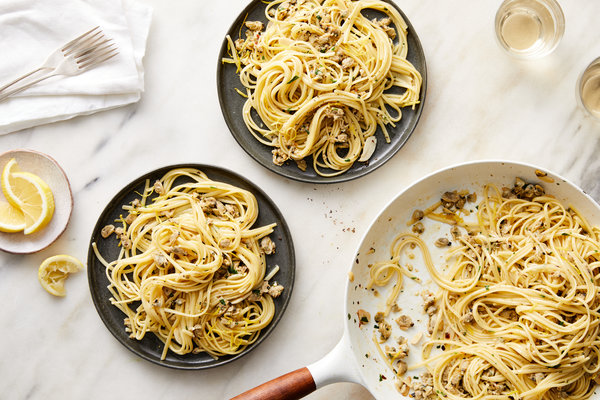 Pantry Friendly Pasta with Lemon, Basil and Clams
Pantry Friendly Pasta with Lemon, Basil and Clams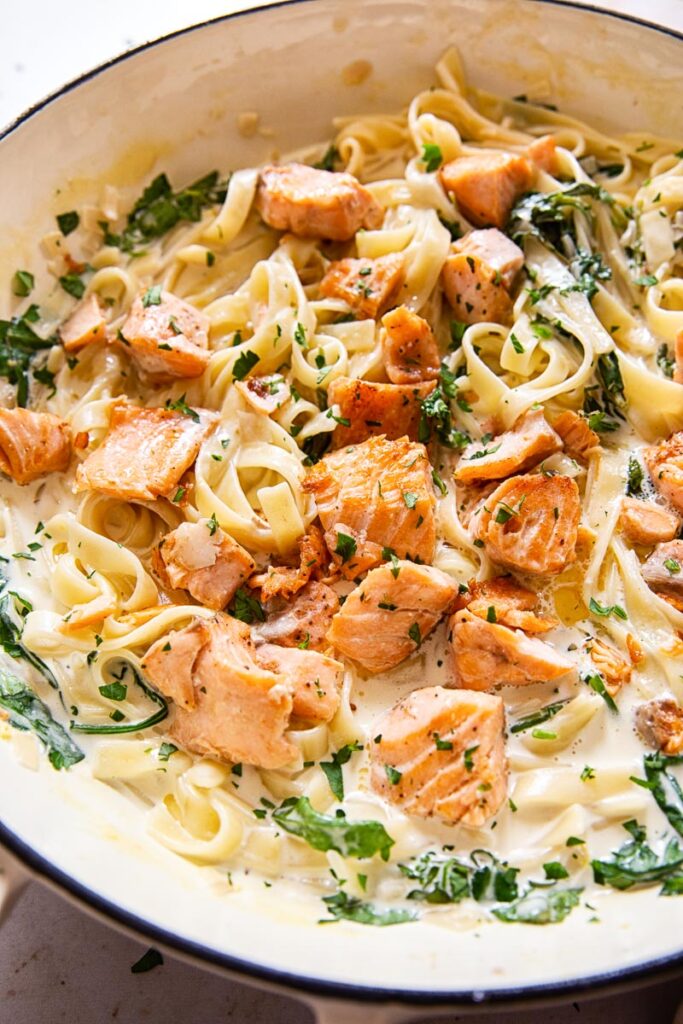 Creamy Salmon Pasta with Mixed Greens
Creamy Salmon Pasta with Mixed Greens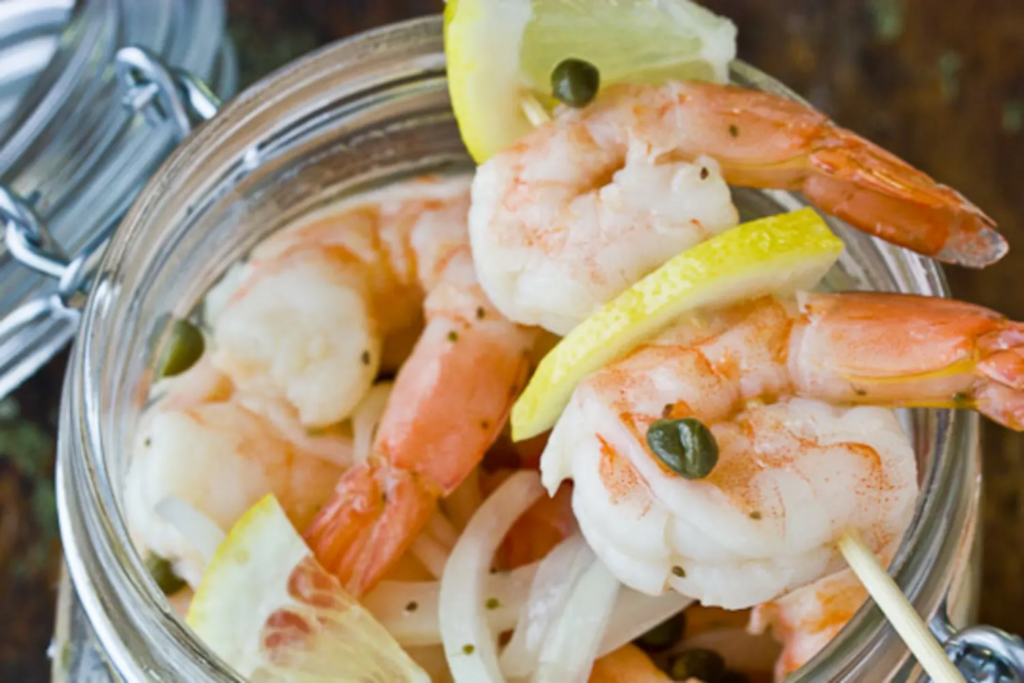 Pickled Shrimp
Pickled Shrimp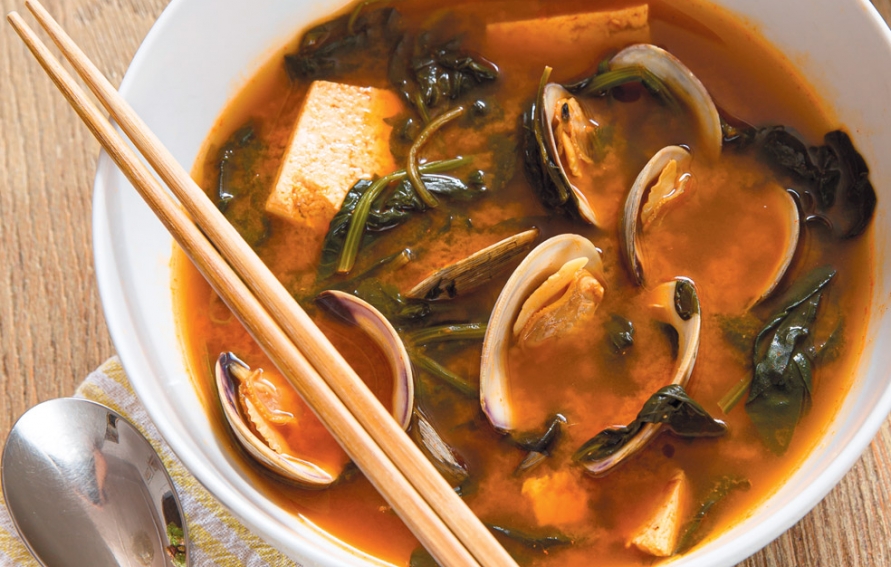 Spinach Miso Soup with Clams
Spinach Miso Soup with Clams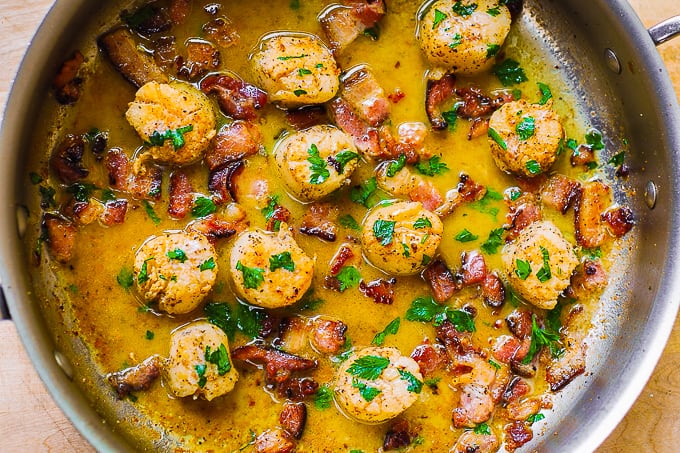 Bacon Scallops with Lemon Butter Sauce
Bacon Scallops with Lemon Butter Sauce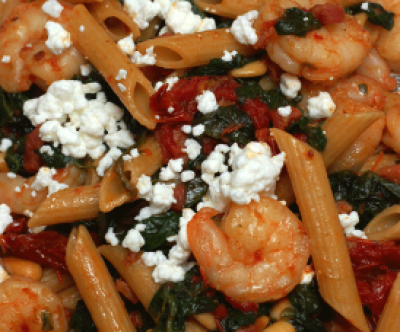 One Pan Penne with Shrimp and Sundried Tomatoes
One Pan Penne with Shrimp and Sundried Tomatoes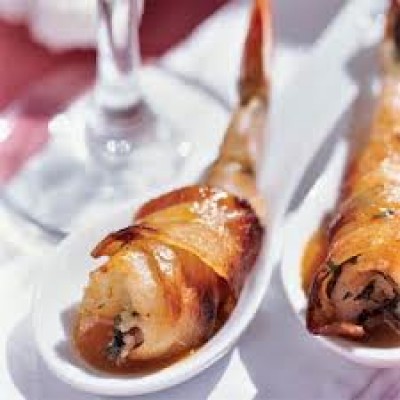 Prosciutto-Wrapped Shrimp
Prosciutto-Wrapped Shrimp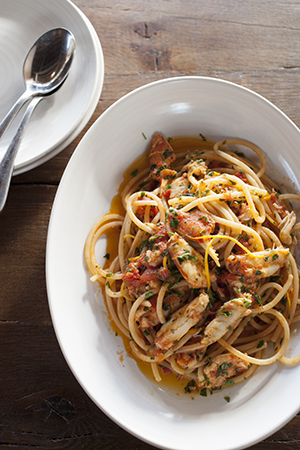 Bucatini with Dungeness Crab
Bucatini with Dungeness Crab